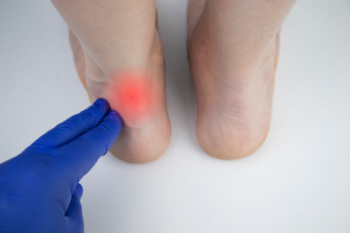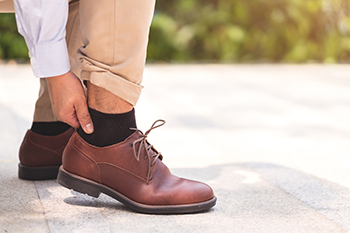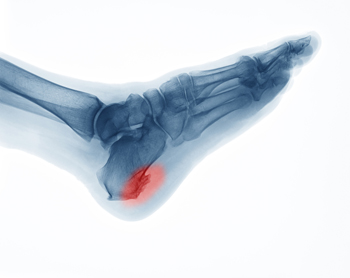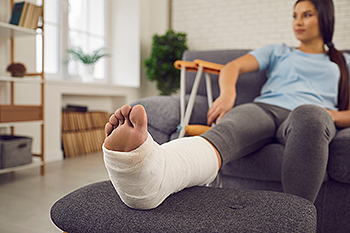
Toe, foot, and ankle problems in children often arise from acute or overuse injuries. Acute injuries happen suddenly, typically from accidents or falls during play or sports. Examples include sprained ankles, where the ligaments are overstretched or torn, and fractures, which involve broken bones in the foot or ankle. These injuries usually cause immediate pain, swelling, and difficulty walking or standing. Overuse injuries develop gradually from repetitive activities. Common examples in children include plantar fasciitis, Achilles tendonitis, and stress fractures, often resulting from sports that involve running or jumping. Wearing poor footwear, improper technique, or a sudden increase in activity can also contribute to these issues. Both types of injuries require appropriate care, from rest, and for more serious conditions, professional treatment by a podiatrist. If your child has sustained an injury to their ankles or feet that are not healing in a timely way, it is strongly suggested that you visit a podiatrist who can provide a proper diagnosis and treatment plans to prevent further complications, and ensure healthy development.
The health of a child’s feet is vital to their overall well-being. If you have any questions regarding foot health, contact Vincent, Vess of Fourth River Foot & Ankle. Our doctor can provide the care you need to keep you pain-free and on your feet.
Tips for Keeping Children's Feet Healthy
- Make sure their shoes fit properly
- Look for any signs of in-toeing or out-toeing
- Check to see if they have Clubfoot (condition that affects your child’s foot and ankle, twisting the heel and toes inward) which is one of the most common nonmajor birth defects.
- Lightly cover your baby’s feet (Tight covers may keep your baby from moving their feet freely, and could prevent normal development)
- Allow your toddler to go shoeless (Shoes can be restricting for a young child’s foot)
- Cut toenails straight across to avoid ingrown toenails
- Keep your child’s foot clean and dry
- Cover cuts and scrapes. Wash any scratches with soap and water and cover them with a bandage until they’ve healed.
If you have any questions, please feel free to contact our offices located in Pittsburgh, White Oak, and McKeesport,PA . We offer the newest diagnostic and treatment technologies for all your foot care needs.









